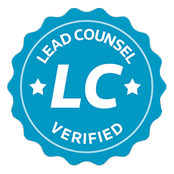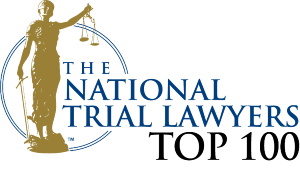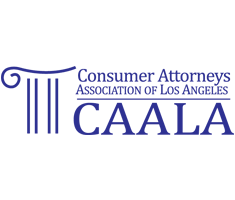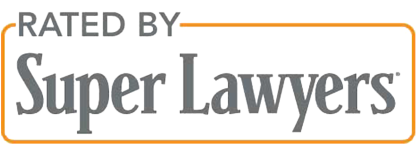Walking into a store, you might be preoccupied with your shopping list or looking forward to browsing the shelves. It’s easy to overlook the importance of good lighting, but poor lighting conditions can have serious implications. Unfortunately, a dimly lit store can quickly become a hazardous environment, leading to slip and fall accidents. But who is responsible when such incidents occur, and how is accountability established?
The Implications of Inadequate Lighting
Good lighting serves a dual purpose in stores: showcasing products and ensuring safety. When poorly lit, a store not only compromises the visibility of merchandise but also jeopardizes the safety of its customers. A small liquid spill or an inconspicuous item on the floor can be easily missed by both staff and shoppers. This oversight, paired with inadequate lighting, forms a recipe for slip and fall accidents.
Legal Framework: Duty of Care
At the heart of legal discussions on store accidents is the concept of ‘duty of care’. Retailers have a legal obligation to provide a safe environment for their patrons. This duty extends to ensuring that premises are well lit, clear of obstructions, and free from hazards. When lighting is insufficient, and it results in an accident, there’s a strong case for negligence.
Proving Liability in Slip and Fall Cases
If you’ve had an unfortunate experience of slipping in a poorly lit store, proving liability might be your next concern. Here are steps to consider:
Document the Scene
As soon as an incident occurs, it’s essential to capture as much evidence as possible. Photographs of the area, the lighting conditions, and any potential hazards can be invaluable.
Witness Statements
If anyone saw what happened, their accounts can corroborate your version of events. Ensure you collect contact details for any witnesses.
Report the Incident
Inform the store management immediately. They should document the accident, and this report can be instrumental in building a case.
Medical Attention
Always seek medical attention after a fall. Not only is this critical for your health, but medical records will provide evidence of any injuries sustained.
Prevention is Better than Cure
For store owners and managers, preventing slip and fall accidents should be a priority. A proactive approach includes:
- Routine checks: Regular walk-throughs can identify and rectify potential hazards.
- Maintenance protocols: Immediate action should be taken when issues like burnt-out bulbs are detected.
- Training: Staff should be trained to recognize and address risks promptly.
Taking Responsibility
For shoppers, being mindful of our surroundings is always wise. Yet, we rightfully expect stores to be safe spaces. When poor lighting compromises this safety, it’s crucial that accountability is established, and those responsible are held to task.
In a world where the customer is king, businesses must prioritize the well-being of their patrons. With proper lighting and safety protocols, retailers can ensure that shopping remains the enjoyable experience it should be, devoid of unnecessary risks.
The Economic Impact of Slip and Fall Incidents
Slip and fall accidents have an economic impact. This includes:
The Direct Costs to Businesses
It’s easy to underestimate the economic ramifications of a slip and fall accident in a store setting, particularly when poor lighting is the cause. For businesses, these incidents carry direct costs. Medical compensation, legal fees, and increased insurance premiums can quickly add up. Plus, there may be costs for property damage if merchandise is broken during the incident or if fixtures are damaged.
Reputation at Stake
A single incident can cause a ripple effect in the community. Word of mouth, especially in the age of social media, can travel fast. Negative reviews and testimonials about an unsafe environment can lead potential customers to think twice before visiting, impacting a store’s revenue and reputation.
Employee Morale and Productivity
Accidents, especially preventable ones, can impact staff morale. When employees see customers getting hurt due to overlooked safety measures, they might question the store’s commitment to safety and well-being. This sentiment can decrease productivity and even lead to increased staff turnover.
Long-Term Implications for Victims
Victims of slip and fall incidents may suffer long-term implications, including:
Lasting Health Issues
While some slip and fall incidents may result in minor bruises or cuts, others can have long-term health implications. Broken bones, concussions, or chronic pain can lead to extensive medical treatments and rehabilitation.
Loss of Income and Productivity
Depending on the severity of the injury, victims might need to take time off work, impacting their earning potential. For those who are self-employed or lack comprehensive health insurance, this can have severe financial consequences.
Emotional and Psychological Impact
Beyond the physical injuries, victims of slip and fall accidents often undergo emotional distress. The trauma of the accident, coupled with potential anxiety about returning to similar environments, can have lasting effects.
Steps Towards Safer Environments
Thankfully, there are several things we can do to make environments safer and reduce the risk of slip and fall incidents.
Leveraging Technology for Enhanced Safety
In our digital age, there’s a plethora of technological solutions that can assist businesses in ensuring safety.
- Smart lighting systems: These systems can adjust the brightness based on the time of day or the number of people in the store, ensuring optimal lighting conditions at all times.
- Sensors and alarms: Placing sensors in areas prone to spills or obstructions can alert staff immediately when there’s a potential hazard, allowing for swift action.
Customer Feedback and Vigilance
Listening to customers can be a gold mine of information for store owners. If multiple patrons highlight poor lighting in specific sections, it’s a clear sign that corrective action is needed.
By providing platforms for customers to share their observations and concerns, businesses can gain valuable insights into potential risks they might have overlooked.
Plus, stores can periodically conduct safety surveys, asking customers about their experience and any safety concerns they might have noticed. Such proactive measures can prevent accidents and demonstrate a commitment to customer welfare.
The aftermath of a slip and fall accident in a poorly lit store can be an overwhelming experience. You’re not just dealing with physical injuries but also a maze of legalities, responsibilities, and potential compensations.
Don’t do it on your own – at Payam Law, we specialize in personal injury cases, and our team of seasoned experts understands the intricacies of establishing accountability in store slip and fall incidents. Reach out to us today at:
- Beverly Hills – 8383 Wilshire Blvd, Suite 830, Beverly Hills, CA 90211
- Los Angeles – 212 East Pico Blvd, Suite #4, Los Angeles, CA 90015
- Tulare – 100 E. Cross, Suite #122, Tulare, CA 93274
- Hanford – 13400 Hanford Armona Rd, Suite #B
Call now for a free consultation on (877) 729-2652 or (323) 782-9927.














